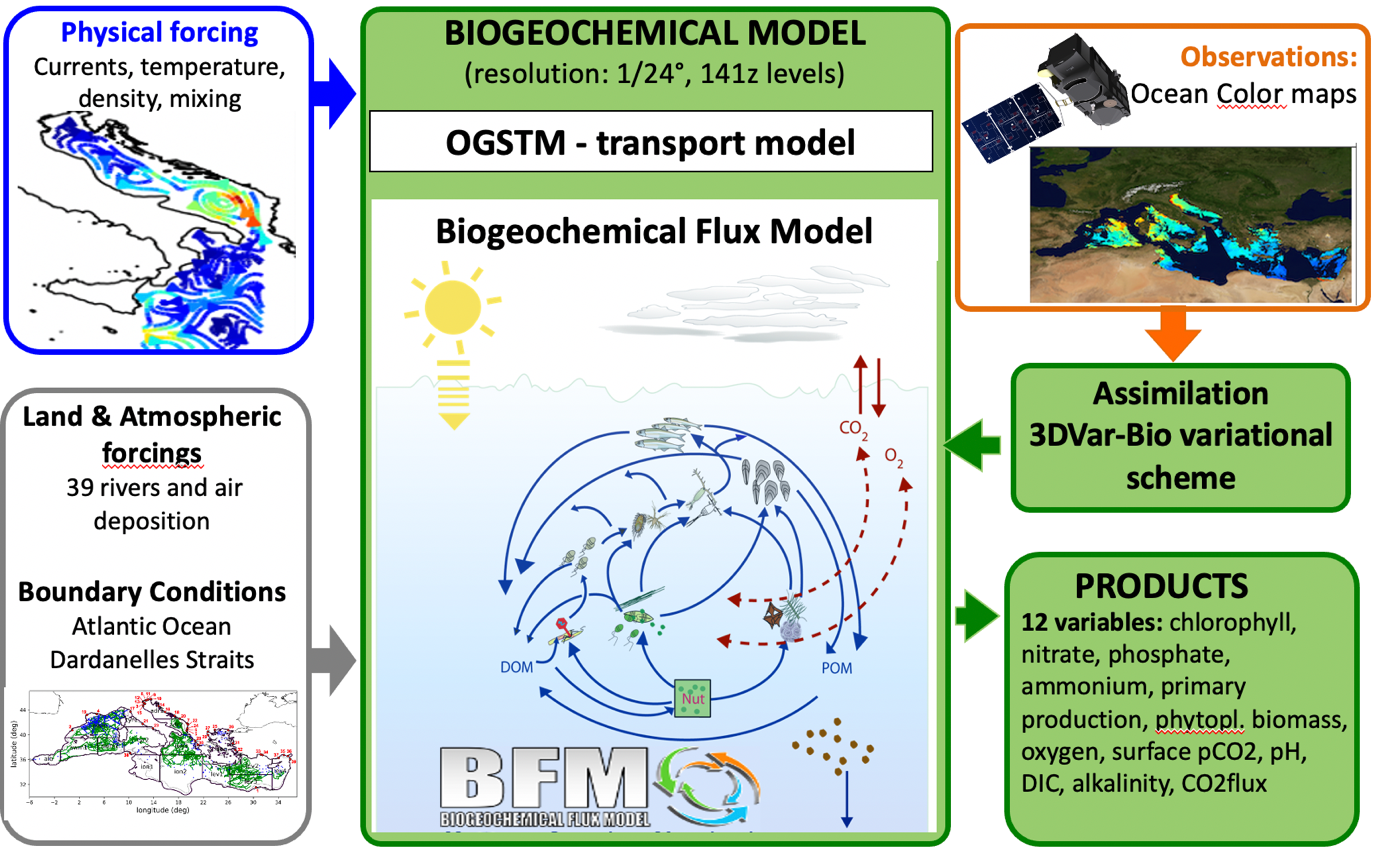The CMEMS reanalysis of the Mediterranean Sea is produced with an upgraded version of the MedBFM model system. The horizontal resolution is 1/24 of degree (approximately 4 km) and the covered period is 1999–up to 1 month before the present.
The MedBFM is built over the coupling between the OGS transport model (OGSTM), the Biogeochemical Flux Model (BFM) and the 3DVarBio variational scheme that assimilates surface chlorophyll concentrations. The BFM describes the biogeochemical cycles of carbon and macronutrients (nitrogen, phosphorus, and silicon) in terms of dynamic interactions among the dissolved inorganic, living organic, and non-living organic compartments.
MedBFM is coupled off-line with the CMEMS Mediterranean Sea physical reanalysis system, which provides the necessary fields at a daily frequency for 21-year integration (currents, temperature, salinity, diffusivity, wind, and solar radiation) to force tracer transport, dependency of biochemical kinetics on the temperature, and air-sea interactions.
The setup of the biogeochemical component includes the atmospheric CO2 partial pressure, which increased almost linearly from 370 ppm in 1999 to 410 ppm in 2019; the nutrient and carbon inputs from 39 rivers and from atmosphere deposition, boundary conditions in the Atlantic Ocean and at the Dardanelles Strait, ERA5 atmospheric forcing.

The reanalysis is describe in the scientific paper: Cossarini et al., 2021.
Products are available at the CMEMS webportal.
More information about PRODUCTS in the Quality Information Document for the Med biogeochemistry reanalysis.
The reanalysis is run at the CINECA supercomputing centre (Bologna, Italy).
The assimilated surface chlorophyll observations are provided by CMEMS ocean color.
Physical forcing are from CMEMS physical reanalysis.
